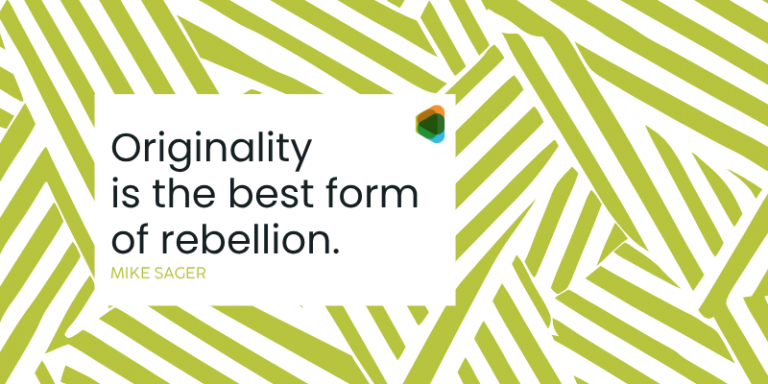Digital marketing has created an environment where brands constantly seek new and creative ways to engage their audiences. With innovation, sound has emerged as an effective tool for brand engagement. This has given rise to the popularity of sonic logos.
This phenomenon is a result of human nature: people have a greater memory for music and sound. Compared to lyrics, music strikes the mind more effectively, affects the brain more significantly, and has a longer-lasting effect on one’s memory than lyrics. Even if we have not heard the melodies for many years, the auditory imagery may help us to recall them easily.
Furthermore, the melody is intended to remind listeners of important messages while evoking emotions associated with fond memories. Thus, even a small aspect of brand identity, such as a melody, can have a greater impact on the success of a brand than impressive visuals.
With audio branding becoming increasingly prevalent, sonic logos (not to be confused with audio logos) have become the stars of the new soundscape. The blog discusses the importance of sound in branding, particularly these logos.
What Are Sonic Logos?
Sound logos (also referred to as audio logos or mnemonics) are brief audio assets designed to convey a brand’s identity quickly. Often, it is used to create a more comprehensive sonic branding strategy in conjunction with a brand’s visual logo design or related graphic. Sonic logos are used to unify a brand’s core purpose and mission under one branding strategy in a subtle, but meaningful manner.
The right sonic logo is unique, instantly recognizable by consumers, and reflects the style of the brand as reflected in advertising, marketing collateral, events, products, and other touch points.
Typically, it is composed of a short piece of music (2-5 seconds), but it can also incorporate sound effects, voices, or other elements that capture the brand attributes. An iconic Xbox 360 logo created by Audiobrain expresses key brand attributes with the breath unit. When used in conjunction with visual graphics, Sonic logos make a powerful statement about the Xbox 360’s living, breathing nature.
How to Design Sonic Logos?
Here are a few steps to follow when creating sonic logos for brand awareness and recognition.
1. Perform Research and Audits
Consider your target audience – who they are, their tastes, and what will appeal to them. This will help you brainstorm with clarity and come up with a sound that can be identified with your sonic logos.
After that, you must spend some time understanding what this audience thinks about you. Are you able to build upon your brand’s sonic equity? Does sound play a critical role in changing the perception of your brand? A preliminary stage is laid out here, incorporating music, sound, and voice where appropriate.
2. Test and Produce
A clear understanding of your audio strategy’s overall aesthetic is essential. Developing one from scratch is always a good approach. The mood board you build should be based on your brand’s values and positioning and a clear sense of the sound for the sonic logo.
Try it out, and don’t be afraid to fail! Only through testing audio with real audiences can you gain an objective insight into the uniqueness of the brand, attribute alignment, and brand recall.
3. Create a Distribution Strategy
Understand the audio landscape before anything else. Consumers have access to a wide variety of audible touchpoints. It is important to be clear about where you want the sound to be heard. It is important to create a unique identity for your sonic logos that can be adapted to the various expanding platforms. The number of platforms offering ‘sound on’ or ‘sound first’ content is growing, but audio strategies extend beyond these platforms.
Audio strategies can take many forms beyond the standard digital, TV, and radio touch points, including events, sponsorships, in-store and product placements. With such a comprehensive approach, your professional brand identity is enhanced and echoed.
4. Implement and Align with Brand Purpose
A key aspect of your new strategy is knowing how to implement it. There is too often a lack of audio execution strategy, which leads to a successful audio strategy falling flat.
You should consider implementing a comprehensive audio strategy guideline for your sonic logos as a priority. Use these guidelines as a roadmap to ensure consistency of sound in audio assets across multiple platforms and situations.
To ensure a smooth implementation of the new audio strategy, everyone must understand the vision and align themselves with it. You can perform this by conducting onboarding workshops designed to help your team understand and implement the strategy.
The Difference Between Audio and Sonic Branding
Many people might get confused about audio and sonic branding. Well, there is a slight difference between both terms. As the name implies, audio branding involves integrating sound with brand identity. It may take the form of a song, jingle, or podcast. Sonic branding involves using sound effects to leave a lasting impression on the consumer. It takes only a few seconds!
By using certain sonic signatures, sonic brands create an emotional bond between audiences and brands. Additionally, these sounds also serve as a starting point for the audio branding activities of a business. These could be featured on social media channels and integrated within a company’s professionally designed website in video format as well.
Audio branding contains jingles (State Farm’s like a good neighbor), music tracks, and voiceovers, whereas sonic branding contains a whole lot of other things like a sonic logo, brand theme music, and user interface sounds.
Audio is much broader in scope, encompassing all sound elements related to a brand while sonic is more focused and strategic, often using specific sounds crafted to represent the brand identity all at once.
Key Elements of Sonic Branding
Sonic branding relies heavily on sound to create a long-lasting impression. We will explore how sound branding elements, such as sonic logos, jingles, and brand soundscapes, combine to create a distinctive audio identity for your company.
1. Sound Logos
Whether it is a brief, distinctive sound or melodies, these are used to identify the auditory identity of a business or organization. The purpose of a sound logo is similar to that of a visual logo in that it captures the essence of the brand quickly.
Using audio or sound logos is a powerful method for establishing brand recognition instantly. An audio snippet that captures the brand’s essence becomes a symbol of the brand itself over time.
2. A Brand’s Soundscape
Similarly to a painter’s palette, a brand soundscape is comprised of sounds and music carefully chosen to convey a brand’s personality, values, and distinctive characteristics. Emotions, stories, and brand messages are conveyed through these auditory landscapes in sonic logos.
If you think of Apple, their commercials are characterized by a serene, minimalist soundscape that instills grace and creativity. Soundscapes have a similar effect to business name ideas in that they subconsciously reinforce perceptions of audio brands.
3. Sound Mnemonics and Jingles
A jingle or sonic mnemonic is a memorable, often lyrical tune or melody that enhances brand recall. Sound branding is not only memorable but also an effective memory aid. A sonic mnemonic can transcend both cultural and linguistic boundaries, making it a universally effective tool for branding. You can also consider such jingles for music logos or entertainment logos (Think MGM’s Lion!)
The Impact of Sonic Branding on Retail
It is best to use sound effects at the checkout to increase the customer’s trust and unobtrusively encourage them to complete the purchase. Audiences can connect viscerally with them beyond visual cues.
By creating moments of emotional connection with a sonic logo, you can can strengthen trust and recognition among consumers. Most importantly, they can feel confident during the purchase process.
A study conducted by Mastercard has shown that more than 65% of consumers believe they are purchasing from a reputable retailer when the store’s sonic is played during the checkout process. In the retail niche, there must be a balance between the value of familiarity and assurance.
A further reason audio assets benefit retail niches is the fact that they offer multichannel functionality and are relatively easy to integrate. Easily accessible across many different channels, it assures customers at various touch points, including television ads, in-store advertising, films, street stands, websites, and mobile applications.
Benefits of Using Sound in Branding
While visual elements play an important role in branding, sound can convey emotion and build a brand’s personality.
1. Connecting With Emotional Responses
Emotions can be evoked more directly by sound than by visuals. Take, for instance, the thrill experienced when hearing the roar of racing cars when watching Formula 1 or the peace felt when listening to the gentle sound of waves breaking on a beach. Sound enables brands to connect with consumers on a deeper level, as emotional responses are often more immediate and powerful.
2. Adaptable in Multiple Cultures
There is no language barrier or cultural barrier when it comes to sound. Melody and rhythm can evoke similar emotions in a wide range of audiences, making them effective tools for international brands. Visual elements may need to be translated or adapted to appeal to a variety of cultures.
3. Multisensory Experiences
It is possible to develop a multisensory experience for a brand by combining visual and auditory elements. An effective television commercial or multimedia presentation, for example, combines visuals and sound to give consumers a whole and engaging experience that resonates with them on more than one level.
Popular Examples of Sonic Logos Around the World
Here are some notable examples of Audio logos and how the popular brands utilized the sonic branding:
McDonald’s. “I’m lovin’ it” is more than just a catchy tune; it is a global phenomenon that enhances the brand image of the fast food giant. The melody captures in a few notes the joy of the brand and its satisfaction.
Nokia. Possibly the most recognizable audio logo in the world, the Nokia tune captures the core of what mobile technology is all about. It is a simple but memorable tune that creates a sense of reliability and connectivity.
Intel. There is no doubt that Intel’s chime – a series of notes – is an iconic audio symbol that symbolizes technological advancement. With advanced technology and reliability, it promises more than just a sound.
HBO. There is nothing more memorable in television than the music that plays before HBO shows. For viewers, it signals that they are about to watch an exciting program by setting a mood and creating anticipation.
Netflix. “Ta-dum” is the distinctive sound that precedes Netflix’s original content, which has become an indication of relaxation and entertainment. It signifies that it is time to relax and enjoy a movie or television program.
Windows. Users of the Windows operating system are familiar with the startup sound of the operating system. While it has evolved, each version has sought to maintain consistency and familiarity.
Apple. One of the most notable examples of an audio logo is that of the beginning sound of the Apple Macintosh computer. For decades, this reassuring sound has been an integral part of Apple’s branding, signaling the computer’s readiness to use.
Nintendo. Nintendo Switch Snap is a sound that is played when a Nintendo game console is started, a nostalgic and exciting sound for gamers. This immediately evokes a sense of excitement and fun associated with gaming.
Conclusion
It has been debated whether sonic branding is more effective than visual marketing. Despite this, research has shown that audio assets such as sonic logos can be as effective as a thousand words in a picture. There is a ten-fold increase in reactions to them compared to visual objects. Furthermore, they are more likely to be retained in long-term memory than lyrics.
Human emotions are profoundly affected by audio branding, thereby increasing brand recognition and recall more than any other component. In addition, it helps companies find new opportunities to enhance their position, reconnect with their audience, and refresh their image.
The post Sonic Logos: The Role of Sound in Branding appeared first on ZD Blog.




